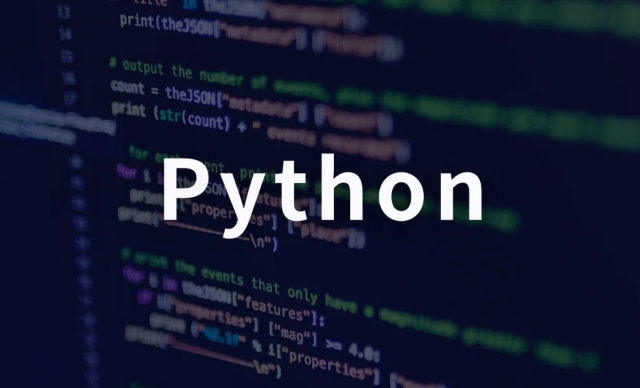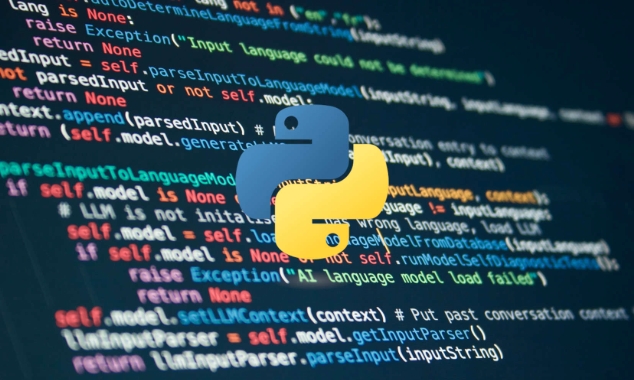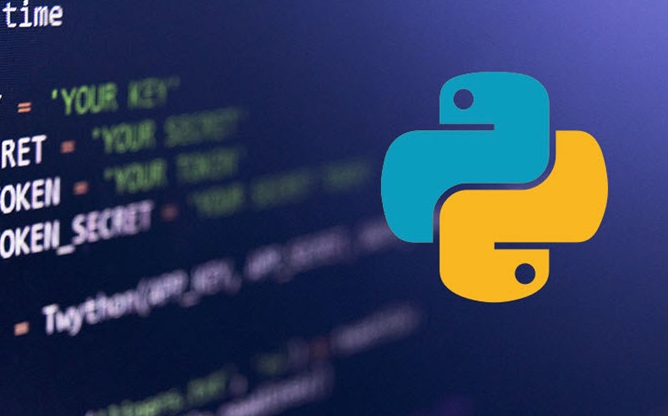How to scrape a website that requires a login with Python
Jul 10, 2025 pm 01:36 PMTo scrape a website that requires login using Python, simulate the login process and maintain the session. First, understand how the login works by inspecting the login flow in your browser's Developer Tools, noting the login URL, required parameters, and any tokens or redirects involved. Second, use requests.Session() to persist cookies across requests, sending a POST request with the correct login credentials and using the session object to access protected pages afterward. Third, handle dynamic logins—such as JavaScript-heavy sites—with tools like Selenium or Playwright for UI automation, which can also extract cookies post-login for further scraping. Fourth, avoid getting blocked or locked out by adding delays between requests, rotating user agents, avoiding brute-force attempts, respecting terms of service, and securely managing credentials via environment variables instead of hardcoding them.

If you want to scrape a website that requires login using Python, the key is to simulate the login process and maintain the session. Unlike public pages, logged-in content is protected by authentication, so you can’t just use requests.get(url) and expect to see the real data. You need to handle cookies or tokens properly.

Here’s how to approach it step by step.
1. Understand How the Login Works
Before writing any code, inspect the login flow in your browser:

- Open Developer Tools (F12), go to the Network tab.
- Try logging in manually and look for the request made to the login endpoint (
POSTusually). - Check the Form Data or Request Payload — this tells you what parameters are needed (like username, password, maybe CSRF token).
- Also check if there's a redirect after login or if tokens are involved (common with modern apps).
This gives you all the info you need to replicate the login in your script.
2. Use requests.Session() to Keep Cookies
Once you know the login URL and required data, use a session object to persist cookies across requests:

import requests
session = requests.Session()
login_data = {
'username': 'your_username',
'password': 'your_password'
}
login_url = 'https://example.com/login'
session.post(login_url, data=login_data)After this, session will carry the authenticated cookies, and you can use it to access protected pages:
profile_page = session.get('https://example.com/dashboard')
print(profile_page.text) # Should show the actual logged-in contentSome sites may require additional fields like
csrf_token, which you’ll have to extract from the login page HTML first using tools like BeautifulSoup or lxml.
3. Handle Dynamic Logins (e.g., JavaScript-heavy Sites)
If the site uses JavaScript heavily or has complex authentication (like OAuth, JWT tokens), requests might not be enough. In such cases:
- Use Selenium or Playwright to control a real browser.
- These tools can log in via UI automation and then retrieve the final page content or cookies.
Example with Selenium:
from selenium import webdriver
driver = webdriver.Chrome()
driver.get('https://example.com/login')
# Find and fill login form
driver.find_element('name', 'username').send_keys('your_username')
driver.find_element('name', 'password').send_keys('your_password')
driver.find_element('xpath', '//button[@type="submit"]').click()
# After login, get cookies
cookies = driver.get_cookies()
# Now use these cookies with requests or continue scraping via SeleniumKeep in mind: browser automation is slower and heavier than requests.
4. Avoid Getting Blocked or Locked Out
When scraping authenticated pages:
- Don't send too many requests in a short time — add delays with
time.sleep(). - Rotate user agents or use headers similar to real browsers.
- Be cautious with brute-force attempts — some sites lock accounts after multiple failed logins.
- Respect terms of service — scraping may be against the rules.
Also, never hardcode credentials in your scripts publicly — use environment variables or config files.
So to recap:
- Simulate login using
Session()and correct POST data. - Handle dynamic logins with browser automation if needed.
- Always keep sessions alive and mimic real user behavior.
That’s basically it — not rocket science, but easy to mess up if you skip the prep work.
The above is the detailed content of How to scrape a website that requires a login with Python. For more information, please follow other related articles on the PHP Chinese website!

Hot AI Tools

Undress AI Tool
Undress images for free

Undresser.AI Undress
AI-powered app for creating realistic nude photos

AI Clothes Remover
Online AI tool for removing clothes from photos.

Clothoff.io
AI clothes remover

Video Face Swap
Swap faces in any video effortlessly with our completely free AI face swap tool!

Hot Article

Hot Tools

Notepad++7.3.1
Easy-to-use and free code editor

SublimeText3 Chinese version
Chinese version, very easy to use

Zend Studio 13.0.1
Powerful PHP integrated development environment

Dreamweaver CS6
Visual web development tools

SublimeText3 Mac version
God-level code editing software (SublimeText3)

Hot Topics
 How to handle API authentication in Python
Jul 13, 2025 am 02:22 AM
How to handle API authentication in Python
Jul 13, 2025 am 02:22 AM
The key to dealing with API authentication is to understand and use the authentication method correctly. 1. APIKey is the simplest authentication method, usually placed in the request header or URL parameters; 2. BasicAuth uses username and password for Base64 encoding transmission, which is suitable for internal systems; 3. OAuth2 needs to obtain the token first through client_id and client_secret, and then bring the BearerToken in the request header; 4. In order to deal with the token expiration, the token management class can be encapsulated and automatically refreshed the token; in short, selecting the appropriate method according to the document and safely storing the key information is the key.
 Access nested JSON object in Python
Jul 11, 2025 am 02:36 AM
Access nested JSON object in Python
Jul 11, 2025 am 02:36 AM
The way to access nested JSON objects in Python is to first clarify the structure and then index layer by layer. First, confirm the hierarchical relationship of JSON, such as a dictionary nested dictionary or list; then use dictionary keys and list index to access layer by layer, such as data "details"["zip"] to obtain zip encoding, data "details"[0] to obtain the first hobby; to avoid KeyError and IndexError, the default value can be set by the .get() method, or the encapsulation function safe_get can be used to achieve secure access; for complex structures, recursively search or use third-party libraries such as jmespath to handle.
 How to test an API with Python
Jul 12, 2025 am 02:47 AM
How to test an API with Python
Jul 12, 2025 am 02:47 AM
To test the API, you need to use Python's Requests library. The steps are to install the library, send requests, verify responses, set timeouts and retry. First, install the library through pipinstallrequests; then use requests.get() or requests.post() and other methods to send GET or POST requests; then check response.status_code and response.json() to ensure that the return result is in compliance with expectations; finally, add timeout parameters to set the timeout time, and combine the retrying library to achieve automatic retry to enhance stability.
 Implementing asynchronous programming with Python async/await
Jul 11, 2025 am 02:41 AM
Implementing asynchronous programming with Python async/await
Jul 11, 2025 am 02:41 AM
Asynchronous programming is made easier in Python with async and await keywords. It allows writing non-blocking code to handle multiple tasks concurrently, especially for I/O-intensive operations. asyncdef defines a coroutine that can be paused and restored, while await is used to wait for the task to complete without blocking the entire program. Running asynchronous code requires an event loop. It is recommended to start with asyncio.run(). Asyncio.gather() is available when executing multiple coroutines concurrently. Common patterns include obtaining multiple URL data at the same time, reading and writing files, and processing of network services. Notes include: Use libraries that support asynchronously, such as aiohttp; CPU-intensive tasks are not suitable for asynchronous; avoid mixed
 Python variable scope in functions
Jul 12, 2025 am 02:49 AM
Python variable scope in functions
Jul 12, 2025 am 02:49 AM
In Python, variables defined inside a function are local variables and are only valid within the function; externally defined are global variables that can be read anywhere. 1. Local variables are destroyed as the function is executed; 2. The function can access global variables but cannot be modified directly, so the global keyword is required; 3. If you want to modify outer function variables in nested functions, you need to use the nonlocal keyword; 4. Variables with the same name do not affect each other in different scopes; 5. Global must be declared when modifying global variables, otherwise UnboundLocalError error will be raised. Understanding these rules helps avoid bugs and write more reliable functions.
 Python FastAPI tutorial
Jul 12, 2025 am 02:42 AM
Python FastAPI tutorial
Jul 12, 2025 am 02:42 AM
To create modern and efficient APIs using Python, FastAPI is recommended; it is based on standard Python type prompts and can automatically generate documents, with excellent performance. After installing FastAPI and ASGI server uvicorn, you can write interface code. By defining routes, writing processing functions, and returning data, APIs can be quickly built. FastAPI supports a variety of HTTP methods and provides automatically generated SwaggerUI and ReDoc documentation systems. URL parameters can be captured through path definition, while query parameters can be implemented by setting default values ??for function parameters. The rational use of Pydantic models can help improve development efficiency and accuracy.
 How do you swap two variables without a temporary variable in Python?
Jul 11, 2025 am 12:36 AM
How do you swap two variables without a temporary variable in Python?
Jul 11, 2025 am 12:36 AM
In Python, there is no need for temporary variables to swap two variables. The most common method is to unpack with tuples: a, b=b, a. This method first evaluates the right expression to generate a tuple (b, a), and then unpacks it to the left variable, which is suitable for all data types. In addition, arithmetic operations (addition, subtraction, multiplication and division) can be used to exchange numerical variables, but only numbers and may introduce floating point problems or overflow risks; it can also be used to exchange integers, which can be implemented through three XOR operations, but has poor readability and is usually not recommended. In summary, tuple unpacking is the simplest, universal and recommended way.
 Python for loop with timeout
Jul 12, 2025 am 02:17 AM
Python for loop with timeout
Jul 12, 2025 am 02:17 AM
Add timeout control to Python's for loop. 1. You can record the start time with the time module, and judge whether it is timed out in each iteration and use break to jump out of the loop; 2. For polling class tasks, you can use the while loop to match time judgment, and add sleep to avoid CPU fullness; 3. Advanced methods can consider threading or signal to achieve more precise control, but the complexity is high, and it is not recommended for beginners to choose; summary key points: manual time judgment is the basic solution, while is more suitable for time-limited waiting class tasks, sleep is indispensable, and advanced methods are suitable for specific scenarios.






